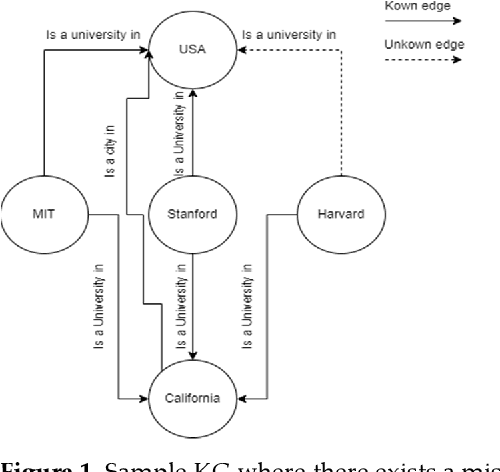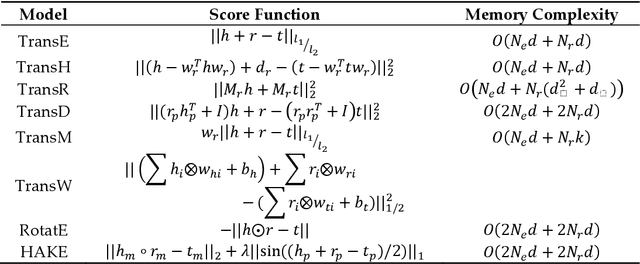Mohamad Zamini
A Review of Knowledge Graph Completion
Aug 24, 2022



Abstract:Information extraction methods proved to be effective at triple extraction from structured or unstructured data. The organization of such triples in the form of (head entity, relation, tail entity) is called the construction of Knowledge Graphs (KGs). Most of the current knowledge graphs are incomplete. In order to use KGs in downstream tasks, it is desirable to predict missing links in KGs. Different approaches have been recently proposed for representation learning of KGs by embedding both entities and relations into a low-dimensional vector space aiming to predict unknown triples based on previously visited triples. According to how the triples will be treated independently or dependently, we divided the task of knowledge graph completion into conventional and graph neural network representation learning and we discuss them in more detail. In conventional approaches, each triple will be processed independently and in GNN-based approaches, triples also consider their local neighborhood. View Full-Text
A Survey on Computational Intelligence-based Transfer Learning
Jun 17, 2022
Abstract:The goal of transfer learning (TL) is providing a framework for exploiting acquired knowledge from source to target data. Transfer learning approaches compared to traditional machine learning approaches are capable of modeling better data patterns from the current domain. However, vanilla TL needs performance improvements by using computational intelligence-based TL. This paper studies computational intelligence-based transfer learning techniques and categorizes them into neural network-based, evolutionary algorithm-based, swarm intelligence-based and fuzzy logic-based transfer learning.
 Add to Chrome
Add to Chrome Add to Firefox
Add to Firefox Add to Edge
Add to Edge